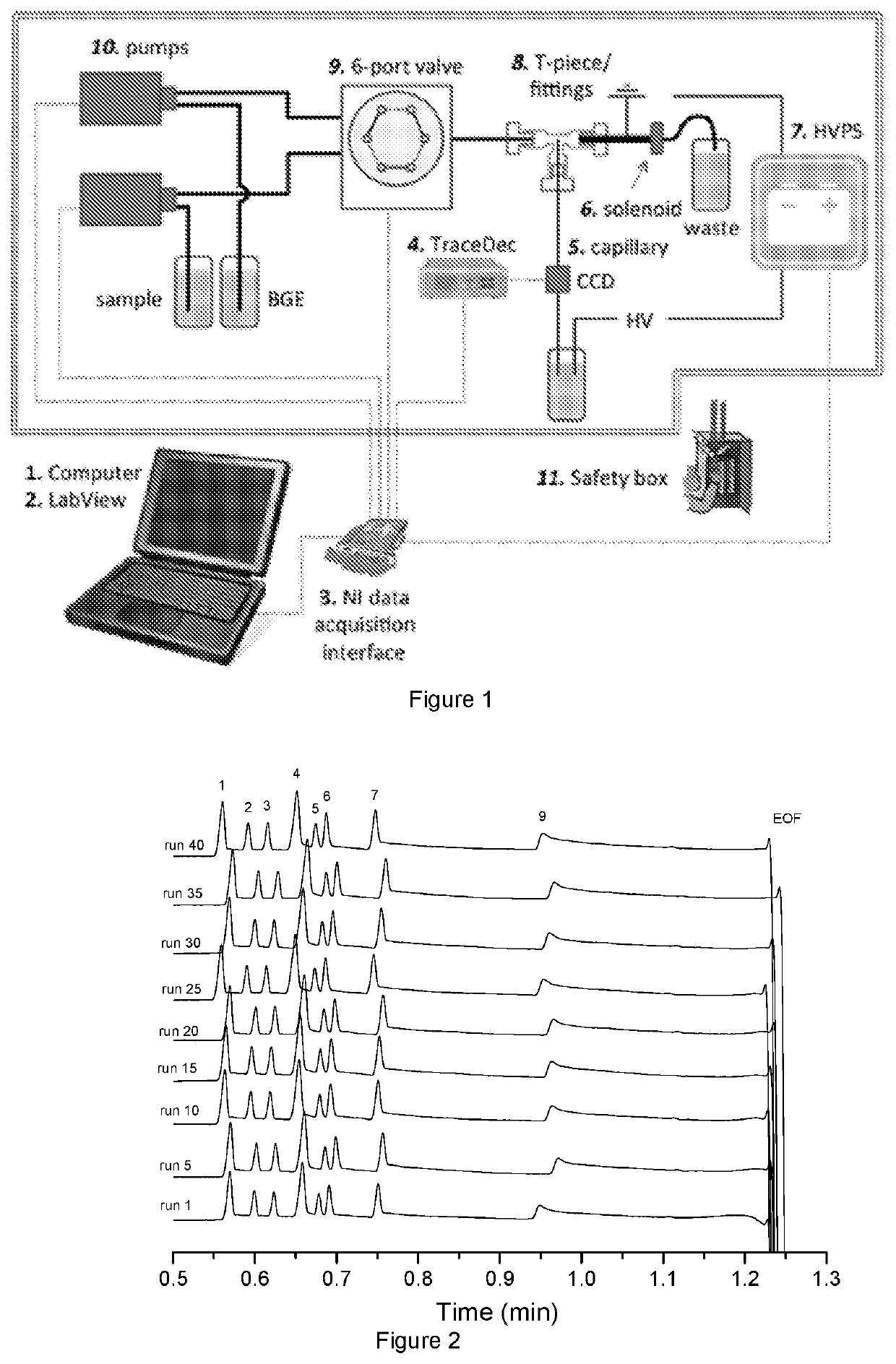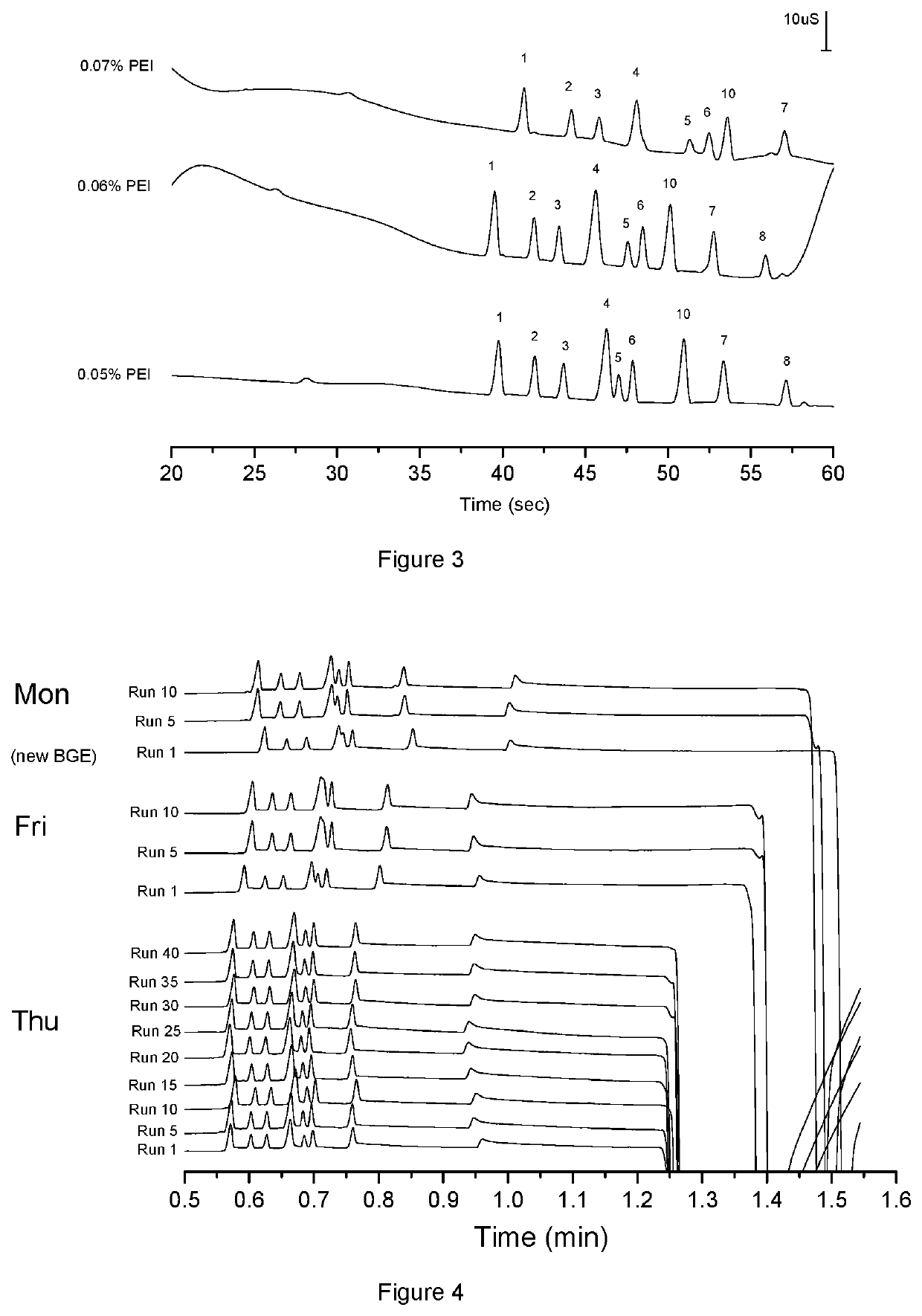Inorganic ion detection system and methods
a detection system and inorganic ion technology, applied in the field of separation and detection of inorganic anions, can solve the problems of high detection limit, difficult to obtain reproducible migration times in existing forms of separation columns, and limited applicability of inorganic or peroxide based explosives, etc., to achieve fast replenishment of consumables, increase stability, and prolong the effect of runs
- Summary
- Abstract
- Description
- Claims
- Application Information
AI Technical Summary
Benefits of technology
Problems solved by technology
Method used
Image
Examples
examples
[0136]The present invention will now be described in further detail with reference to the following examples which demonstrate the principles underlying the invention, and specific embodiments of the invention. It will be appreciated by persons skilled in the art that numerous variations and / or modifications may be made to the invention as shown in the specific embodiments without departing from the spirit or scope of the invention as broadly described. The present embodiments are, therefore, to be considered in all respects as illustrative and not restrictive.
[0137]1. Experimental
[0138]1.1 Chemicals
[0139]All reagents were analytical grade obtained from Sigma-Aldrich (Sydney, Australia) and were used as supplied unless stated otherwise. Dissolutions of reagents were always prepared in Milli-Q water (Millipore, Bedford, Mass., USA). Anion standard solutions of (1000 μgL−1) were prepared by dissolution of the sodium or potassium salt of perchlorate, chlorate, phosphate, nitrate, sulfa...
PUM
| Property | Measurement | Unit |
|---|---|---|
| Voltage | aaaaa | aaaaa |
| Voltage | aaaaa | aaaaa |
| Voltage | aaaaa | aaaaa |
Abstract
Description
Claims
Application Information
 Login to View More
Login to View More - R&D
- Intellectual Property
- Life Sciences
- Materials
- Tech Scout
- Unparalleled Data Quality
- Higher Quality Content
- 60% Fewer Hallucinations
Browse by: Latest US Patents, China's latest patents, Technical Efficacy Thesaurus, Application Domain, Technology Topic, Popular Technical Reports.
© 2025 PatSnap. All rights reserved.Legal|Privacy policy|Modern Slavery Act Transparency Statement|Sitemap|About US| Contact US: help@patsnap.com



